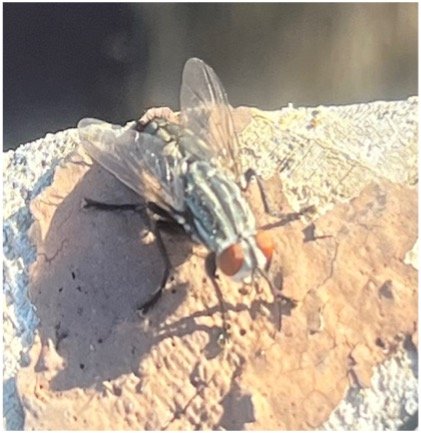by Alan Torretto
In the spring of 2017, I was leading one of my biology classes on a hike in Blue Sky. As we walked along the Creekside Trail, one of my students spotted a dead deer. As I peered through the vegetation I noticed it was a female mule deer. Her thoracic and abdominal cavities were torn open, and the heart and liver were missing. It was a fresh kill. Because of the noise that we were making, had we scared off the mountain lion(Puma concolor)? I am sure the lion was hiding nearby waiting for us to leave. When I returned to the spot after school ended, the carcass was gone. The lion had dragged it off to a more remote area to feed on it.
This is an example of an interaction between two of the many species of mammals that Blue Sky’s habitats support. These big cats probably don’t live in Blue Sky, but it is definitely part of their hunting grounds. A research survey of North America found that 68% of their prey items were ungulates, especially deer. Mountain lions are typically ambush predators, taking one deer about every two weeks.
Indigenous to western North America, the mule deer (Odcoileus hemionus)is named for its ears, which are large like those of the mule. Studies show that some 788 species of plants are eaten by mule deer, depending on the season, geographic region, and elevation. In Blue Sky, acorns are one of its favorite foods. Average lifespan for mule deer is a robust 22 years, making them one of the longest living deer species.
Mule deer carcass Mountain Lion Mule Deer
Kangaroo rats (Dipodomys merriami) are named for their extremely long, kangaroo-like hind feet and they are almost completely bipedal. They hop or jump rather than scurry or run. Their relatively long tail acts to counterbalance the hopping/jumping form of locomotion. Most kangaroo rats are exclusively nocturnal. During the day, they remain in their cool burrows. The diet of Merriam's kangaroo rat is almost exclusively plant seeds. They rarely drink water. Rather, they obtain water through metabolic processes augmented by the moisture content of their food.
Desert cottontails (Sylvilagus audubonii) are herbivores, with 90% of their diet consisting of grass. They also feed on the leaves of other plants and the juicy pads of Prickly Pear. Cottontails rarely need to drink, getting most of their water from the plants they eat or from dew. The lifespan of a cottontail that reaches adulthood averages less than two years. Mated pairs of Cottontails have multiple litters throughout the year. They are preyed upon by many of Blue Sky’s carnivores.
California ground squirrels (Otospermophilus beechey) are the most observed of all Blue Sky’s mammals. They live in burrows, which they excavate themselves. Some burrows are occupied communally, but each squirrel has its own entrance.These little guys use their cheek pouches to store more food than can be consumed in one sitting for a later time. They are mostly herbivorous, with seeds, grains, nuts, fruits, and sometimes roots, constituting most of their diet. Female ground squirrel have one litter of between five and eleven young per year, with gestation around one month.
Merriam’s Kangaroo Rat Desert Cottontail. California Ground Squirrel
Coyotes (Canis latrans) are often spotted alone or in packs of up to four individuals. Primarily carnivorous, their diet consists mainly of deer, rabbits, rodents, birds and reptiles. They will also eat fruit like manzanita berries and mesquite pods. They usually breed between January and March and produce 1 litter per year. The average litter size ranges from 4 to 7 pups. The sound of coyotes howling is one of my favorite sounds of the wild.
In my opinion, one of the “cutest” and one of the rarest mammals in Blue Sky is this little masked carnivore. Don’t let its “cuteness” fool you - it is a deadly hunter! The long-tailed weasel (Neogale frenata) is a fearless and aggressive predator attacking animals far larger than itself. Rodents are its main prey, but shrews, moles, rabbits and birds are also taken.
Raccoons (Procyon lotor) from the procyonid genus which includes ringtails, kinkajous and coatis. These small mammalian carnivores have powerful jaws and teeth. They have highly-developed nerves in the pads of their front paws that function almost like a second set of eyes, helping them identify objects and food sources. Since they are typically nocturnal, raccoons rely on touch and scent more than they do on sight.
Gray foxes (Urocyon cinereoargenteus) have been spotted more frequently in Blue Sky in the last couple of years. They eat a wide varieity of foods including mice, rabbits, squirrels, birds, insects, fruit and even carrion. They typically live 6-8 years in the wild. Gray foxes have oval pupils, unlike the red fox which has slit-like pupils. Its strong, hooked claws allow it to scramble quickly up trees to escape predators like coyotes.
Coyote Long-tailed weasel Raccoon Gray Fox

































